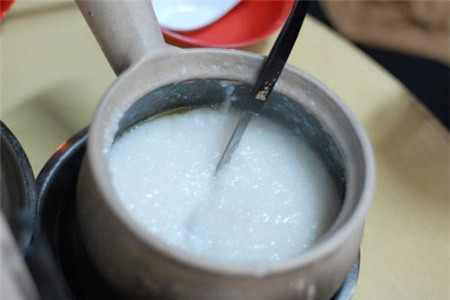How to cook porridge for babies without losing vitamin B1
Vitamin B1, also known as thiamin, is very important for young children. Vitamin B1 deficiency can occur when the mother gives the child a diet that is too poor, monotonous, and low in animal foods (meat, fish, eggs, etc.). B1 plays a role in the metabolism of carbohydrates, helping to stimulate appetite.
Therefore, in young children, vitamin B1 deficiency will cause the most typical symptoms of loss of appetite, anorexia and constipation - which many mothers fear. If the deficiency is severe, it can lead to leg edema, muscle atrophy, mental disorders, coma, heart failure. Breastfeeding children can suddenly die from heart failure if the mother is deficient in vitamin B1.
Vitamin B1 requirements are calculated based on energy intake. Foods rich in vitamin B1 include beans, mushrooms, spinach, tuna, etc. On average, a child's B1 requirements are usually around:
Infants (0-6 months): 200 micrograms (mcg) per day
Infants (7-11 months): 300 mcg per day
Children (ages 1-3): 500 mcg per day
Children (ages 4-8): 600 mg per day
Children (ages 9-13): 900 mcg per day
 |
| Vitamin B1 is easily lost during the process of cooking porridge for babies (illustrative photo) |
While many mothers with children with anorexia have to give their children vitamin B1 supplements, some without the prescription of a pediatrician or child nutritionist, leading to more harm than good, in reality, just because of a lack of knowledge, mothers are also depleting the amount of natural vitamin B1 in the rice porridge cooked for their children every day.
Because Vitamin B1 is easily dissolved in water and destroyed by heat (especially B1 found in green beans), mothers need to pay special attention when cooking rice and porridge for children to avoid losing vitamin B1.
Mothers should note:
- To have enough vitamin B1 in your diet, be careful not to mill the rice too much because B vitamins are abundant in the outer layer right next to the rice grain. Every 100 grams of pounded rice has 0.12 mg of vitamin B1; 100 grams of medium-milled rice has 0.1 mg of vitamin B.
- Do not wash rice too thoroughly before cooking porridge, as this will remove the bran layer containing vitamin B1. Wash rice properly: put the rice in a pot, stir gently, and drain the water to remove the chaff and sand. When cooking porridge for your baby, only add enough water, do not add too much so that you have to drain the rice water, which will remove vitamin B1 (up to 60%).
- You should use boiling water to cook porridge instead of cold water, the rice grains will be more sticky, less nutrients will be lost. Even when cooking porridge in a rice cooker, you should still use boiling water. When cooking with boiling water, the outer layer of the rice grains shrinks, creating a protective layer to prevent the rice grains from cracking or breaking. Cooking porridge with cold water, the rice grains will swell, and the nutrients will also dissolve in the water.
- When the porridge boils, turn down the heat and cover to keep the heat and avoid contact with oxygen, which further destroys the vitamins in the rice. This way, the amount of vitamin B1 retained will be up to 30% more than when cooked with cold water.
According to Discovery






